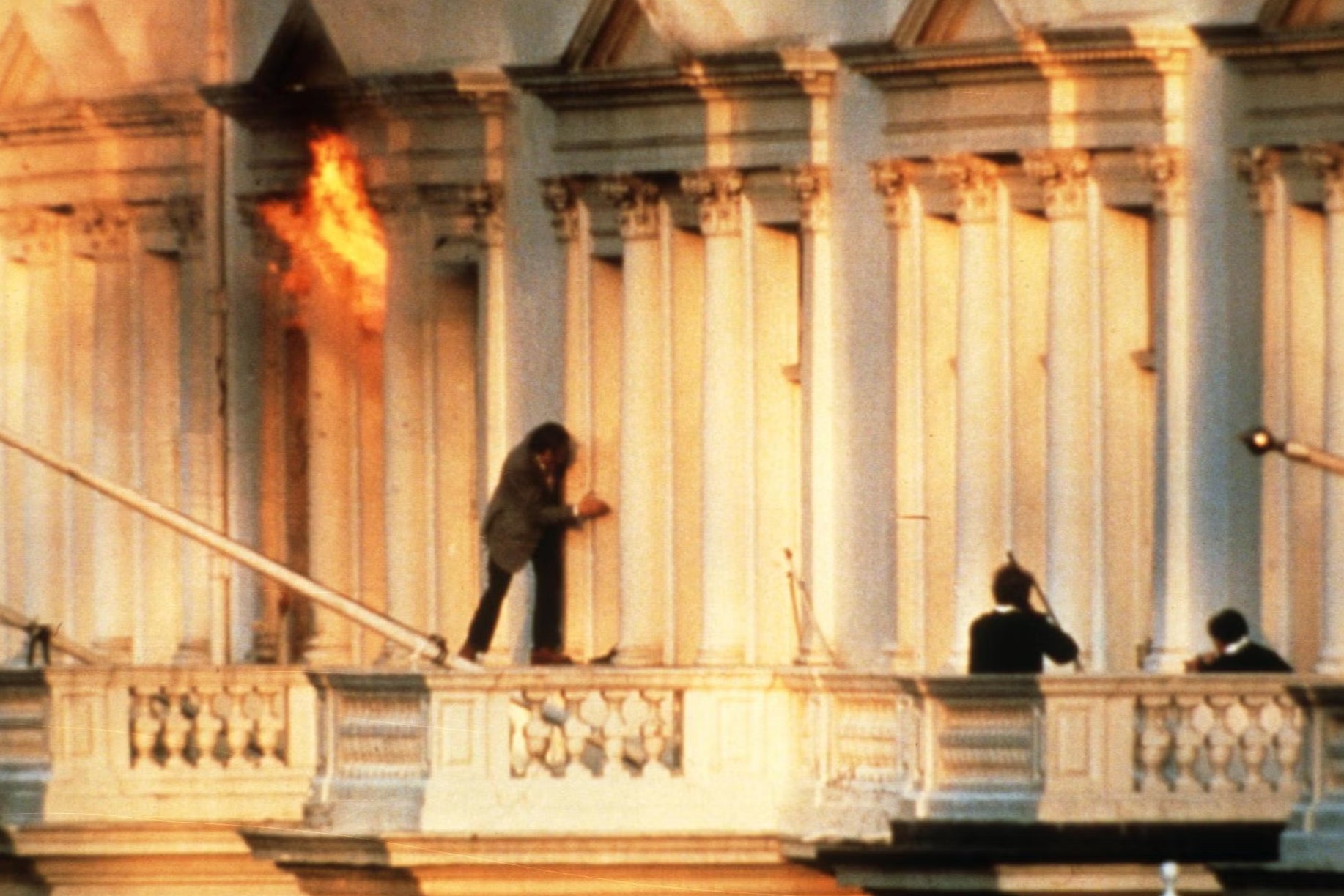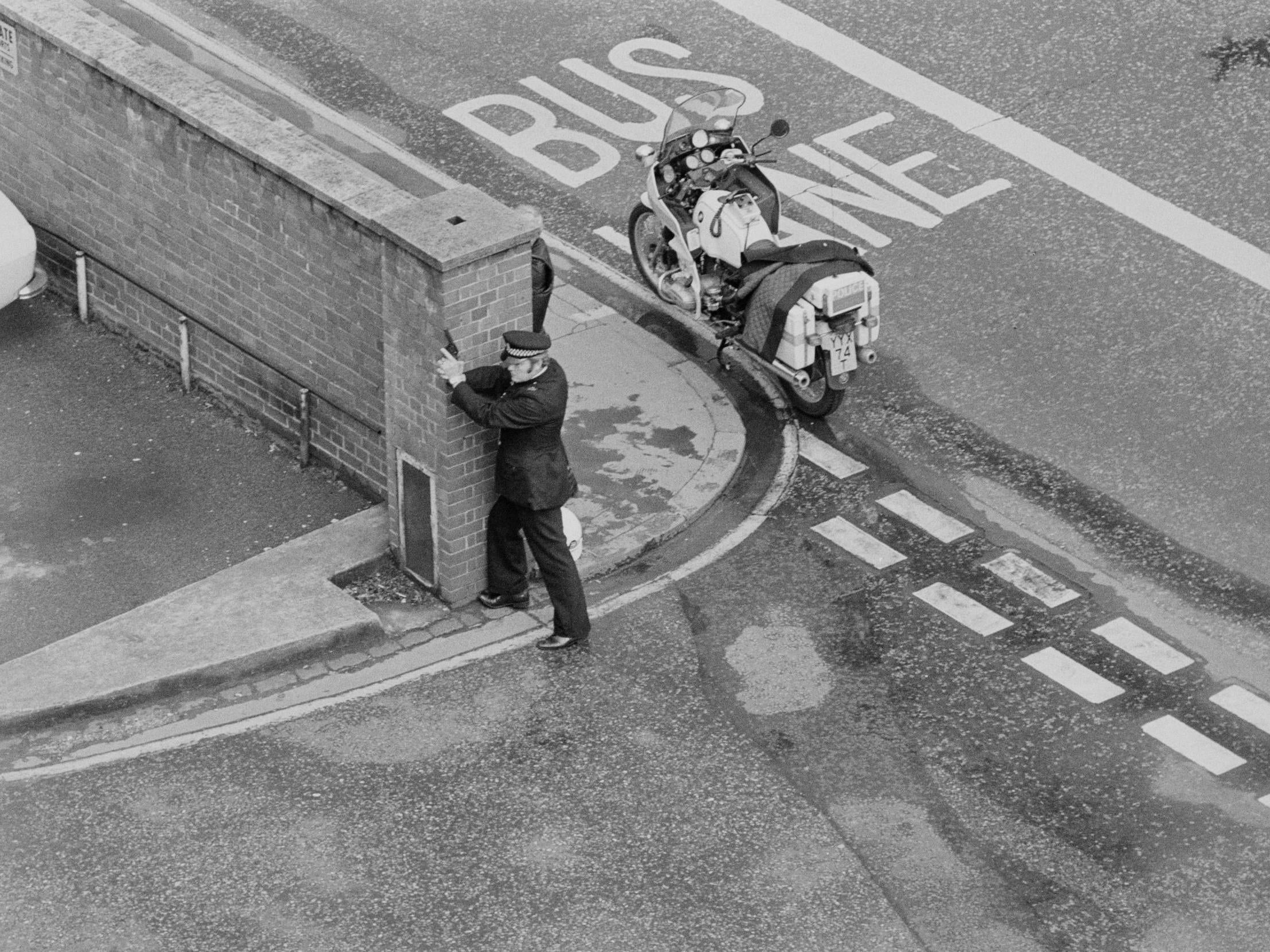Iran embassy siege: How the historic SAS mission unfolded 40 years ago
Witness to history: Patrick Cockburn gives his gripping account of the Iranian embassy seige, 40 years on


At noon on 30 April 1980 I was walking across Hyde Park from my flat in Westbourne Terrace in Notting Hill towards the Iranian Embassy in Princes Gate in South Kensington. I was going there in pursuit of a visa to visit Iran that had been in revolutionary turmoil since the overthrow of the Shah the previous year and the return of Ayatollah Khomeini.
My mind must have been on other things, such as what I would say to the Iranian press attache to persuade him to grant me a visa, because I only slowly took on board that something out-of-the-ordinary was happening on the south side of the park: agitated people were running to and fro and the police were setting up a cordon. I asked one of the policemen if I could get through as I was on my way to the Iranian embassy, and he gave me a startled look. “You don’t want to do that,” he said. “That’s where all the trouble is.”
Half an hour earlier six heavily armed men had burst into the Iranian embassy at 16 Princes Gate, taking it over, and seizing 26 hostages. These included Iranian diplomats and embassy staff, non-Iranian journalists interviewing diplomats or seeking visas, as well as an unlucky assortment of others such as a carpet dealer, a banker and a tourist. My feelings were a mix of disappointment that I had not arrived a bit earlier – and had a hostage-eye’s view of the siege – and relief that I had escaped indefinite incarceration, possibly culminating in execution by the gunmen.
The hostage-takers were Iranian Arabs demanding independence for the Arabic-speaking part of Iran’s oil province of Khuzestan in the south west of the country and, more specifically, the release of 91 of their compatriots from Iranian jails. The leader of the gunmen was Awn Ali Mohammed and they all belonged to a shadowy group called the Revolutionary Front for the Liberation of Arabistan. But it was obvious from the start that Iraq was the not very well-hidden hand behind the embassy assault.

Awn and three other gang members had arrived in London on 31 March travelling on Iraqi passports and had rented a flat in Earl’s Court. It later emerged that they were trained in Iraq and armed with sub-machine guns, pistols and grenades supplied by the Iraqi embassy in London, which was believed to have brought the weapons into the UK in its diplomatic bag.
The highly melodramatic and genuinely heroic story of the six-day siege has been told and retold many times on film and in print over the past forty years, but there is surprisingly little interest in why it took place at all. The operatives may have been Iranian Arabs, but this tiny fanatical group would have not got anywhere without being armed and financed by Iraq where Saddam Hussein was already contemplating an aggressive war against Iran. This broke out four months later, raged for eight years and cost at least half a million Iranian and Iraqi lives. The embassy siege in London can be seen as the opening shots in this conflict.
A reason for British disinterest in the causes of the attack is that the siege, above all its dramatic conclusion, became one of the iconic moments in modern British history. The siege came to an end with the successful assault on the embassy building by the SAS on 5 May, the rescue of almost all the hostages, and the death of all but one of the hostage-takers. As an example of British courage and competence in combating an evil enemy, what happened was on par with the Dam Busters raid on Germany by the RAF in 1943. But the embassy siege enjoys a far more exalted place in the British collective memory because the SAS soldiers’ attack was filmed live as it happened in central London and was watched by hundreds of millions of people around the world.
Melodramatic pictures show the SAS assault groups placing explosive charges by the windows, soldiers in balaclavas breaking into the embassy, the rattle of gunfire, the explosion of charges, and the clouds of smoke. The film is gripping viewing to this day, far beyond most military exploits that are now routinely filmed by participants. But the assault was only the final chapter in a series of striking incidents: Police Constable Trevor Lock, a member of the Diplomatic Protection Group, had been having a cup of coffee with the embassy doormen, Abbas Fallahi, when Awd and his gang first rushed in. Lock did have a revolver, but had no time draw it and kept it concealed until the last moments of the siege. But he did manage to press a panic button that activated a pre-rehearsed operation in which police instantly rushed to the embassy and cordoned it off.
The swift takeover of the embassy was followed by six days of gruelling negotiations between the gunmen inside the embassy and the police outside. From the start, Awn threatened to execute one or more hostages unless his demands were met: these included publicising his cause on the BBC, which was partially granted, and the release of prisoners by Iran, something that the Iranian government summarily rejected. Indeed, it suspected that the embassy seizure was a plot by the UK and US to counterbalance the Iranian occupation of the US embassy in Tehran with 52 diplomats and US citizens held hostage. Only a week before the London attack, on 24 April, a US raid had failed disastrously to rescue the hostages in Iran.
The police negotiator swiftly cut the phone lines to the embassy so the hostage-takers could only make contact with the outside world through a field phone supplied by the police (this also had the advantage of always remaining on, unbeknownst to the gunmen, recording everything they said). The aim of the negotiators was to resolve the crisis peacefully with the hostages freed unharmed and the gunmen in custody. Yet a violent outcome was always inevitable if Awn fulfilled his threat to start shooting hostages. The British government was well prepared psychologically and organisationally for this kind of emergency, because of a series of devastating attacks by the IRA and its splinter groups, culminating in the assassinations of Lord Mountbatten and Airey Neave, an MP and close adviser to the prime minister, Margaret Thatcher, the previous year.
A crucial role in the preparations for a violent end to the siege was to be played by the Special Air Service (SAS), a crack assault unit that had hitherto led a shadowy existence since it was created in the Second World War. Trained for just such an operation as an embassy taken over by gunmen and filled with hostages, it had the advantage – as the American would-be rescuers had not had in Iran a week earlier – of operating in the heart of London. Its planners had had six days to gain maximum intelligence about the number, identity, armaments and location of the gunmen.
The final crisis came on 5 May when Awn shot and killed the young press attache, Abbas Lavasani, who had said he was prepared to die as a martyr for Ayatollah Khomeini and the Islamic Revolution. His body was thrown down the front steps of the embassy. The police handed over responsibility to the army which was to make an attack to bring the siege to an end.
At 7.23 pm that evening multiple SAS assault teams – participants say that 60 soldiers in all were involved in the operation – began a minutely choreographed simultaneous assault from different directions. Some abseiled with ropes down from the roof of the embassy, others attacked from adjoining buildings and one team beat in the back door with a sledgehammer. Stun grenades ignited a fire and one soldier was burned after becoming entangled in ropes used in abseiling from above. Five of the gunmen including Awn and one of the hostages, out of 21 still in the embassy, were killed. The whole operation took only eleven minutes and was a total victory from the British point of view.
Margaret Thatcher and the Conservative government benefited from the success and the SAS has been feted ever since. Arab separatists from Iranian Khuzestan were seldom heard of again. Iraq received little blame for orchestrating the attack because the British government saw Iran at that time as its primary enemy in the region.
There is a temptation to compare the speed and efficiency of the British government of the day in dealing with the Iranian Embassy siege with its successor forty years later making floundering and unsuccessful effort to cope with the coronavirus crisis. But the two emergencies are so different in scale and type that close comparisons are unrealistic. Yet British ministers and officials in 1980 do give the impression of being abler and more capable than those in charge in 2020.
Join our commenting forum
Join thought-provoking conversations, follow other Independent readers and see their replies
Comments